Carrie (1976)
Directed by: Brian De Palma
Written by: Lawrence D. Cohen, Stephen King
Starring: Amy Irving, Piper Laurie, Sissy Spacek, William Katt
USA
AVAILABLE ON BLU-RAY: 11TH DECEMBER, from ARROW VIDEO
RUNNING TIME: 98 mins
REVIEWED BY: Dr Lenera, Official HCF Critic
NOTE FROM THE DOC! This is a heavily re-worked version of an older, very lengthy review I did for Carrie. I felt that, rather than do a totally new review, I was content to use my original one as a basis. However, it’s quite ‘spoilerific’. I’ve removed one line, and signposted where there are two other major spoilers, but if you’re one of the very few people who haven’t seen Carrie, you may also want to skip paragraphs four and five of the main part of the review!
One day at the gym during the showers, Carrie White experiences her first period and, having no prior knowledge of menstruation, believes she is bleeding to death. The other girls react by throwing tampons and sanitary pads at her. A frantic Carrie somehow bursts a light bulb with her mind, and later causes an ashtray to fall on the floor. At home, Carrie’s unstable, fanatically religious mother Margaret hears about the locker room incident and locks her into a closet to pray for forgiveness from the ‘’curse of blood”. The next day, Carrie’s teacher Miss Collins subjects Carrie’s tormenters to a week-long boot-camp-style detention, but the worst of the bullies Chris Hargensen storms off the field and is banned from the prom. Sue, feeling guilty for teasing Carrie, convinces her boyfriend Tommy Ross to invite Carrie to the prom, but Sue has other plans for Carrie….
Brian De Palma’s lyrical, touching, yet also sometimes very funny horror classic remains one of the top five Stephen King-derived films. However, is it really a horror film? It certainly becomes one towards the end, finishing with possibly the greatest jump scare in the history of the genre. However, prior to that, while it has its very dark elements, and can be seen as almost the ultimate film which gets us to side with the “monster”, it doesn’t really come across much as being horror to me – though I don’t mean that in a bad way. Maybe it’s just me. What it is, is a twisted modern fairytale with distinct elements of Cinderella and The Ugly Duckling, the charge and feeling of its tragic story refusing to get lost in its director’s fireworks, though it’s also a superb example of De Palma’s great skill in playing with an audience as well as being pretty stunning filmmaking in its own right. And that final scene – the first time I saw it, I jumped out of my skin. The second time I saw it, I was in a roomful of over twenty people and, deciding to watch their reactions instead, saw every single one of them jump. Each time since then, even the other day when I re-watched the film for this review, I flinch a little, even though I know it’s coming. MAJOR SPOILER….It’s so effective that you just don’t notice that Sue’s mother actually mouths the name “Amy” instead of “Sue” when Sue wakes up. Amy’s real-life mother played her screeen mother, and was shocked her seeing her daughter so hysterical, though aurally the mistake is covered up by the music. And would you believe it, it’s actually Spacek’s hand. The actress asked that she be buried for the scene.
Carrie was Stephen King’s first published novel, though it’s his wife Tabitha whom we ought to really thank, because she retrieved it out of the bin into which he’d thrown it. He based the title character on two people he knew when he was a teacher. I’ve read the book and to be honest it isn’t too well written compared to his later work, but a powerful, affecting tale it still is. The first script by Lawrence D. Cohen, who had trouble getting studio interest, followed the book closely, including replicating some of its flashback structure, but successive drafts altered many details, especially towards the end. Notable changes were Sue not thinking she is pregnant, Carrie and her mother not being ugly, Carrie not reading Sue’s mind and finding out she had nothing to do with the prank, and Sue not having her first period and beginning to write a book about the events. A scripted scene from the novel where Carrie blows up petrol stations with her mind, setting the town on fire, wasn’t filmed due to cost, while opening and closing scenes of Carrie’s house being pummelled by stones weren’t used due to the effects not looking good and a conveyer belt not working, though if you look closely certain shots remain in the film. The auditions for Carrie occurred at the same time as those for Star Wars, and many cast members read for characters in the other film. Spacek was actually going to play Chris the bully until she read for all the other female parts, while Carrie was almost played by Sondra Locke. Spacek got the part by coming to her audition scruffy and unwashed. De Palma felt the middle section was too slow, so he cut some of Amy Irving’s scenes from the final cut including a love scene with William Katt, and simply sped up another scene, the comical tuxedo buying which many fans don’t like. Carrie was a big hit and got good notices too, with both Spacek and Piper Laurie nominated for Oscars.
After opening shots of a volleyball game, the camera tracks past college girl’s changing rooms, each room showing the girls in further states of undress. It’s a typical example of De Palma titillation, the slow motion and the soft focus photography certainly aiding in making the scene quite erotic but also importantly contrasting the happiness of all the girls, totally at home with their bodies and their burgeoning sexuality, with Carrie, who has her first period occur and is horrified. The sight of Carrie crying and reaching out for help, her nudity pathetic and awkward, and the cruelty of the other girls, is harrowing. After this, the film often has a light tone, the scenes at Bates [named after Norman of course] High School almost prefiguring films like Heathers and Mean Girls in their wry look at high school life [though oddly it sometimes seems like we’re in the 1950’s rather than the 1970’s], while the scenes with Carrie and her crazed mother Margaret, surely one of the most bonkers religious nut-jobs in films, are comic in a blacker way, yet still full of intense realism. In fact, there are laugh-out-loud bits throughout, especially from John Travolta as Billy, the super-dumb boyfriend of Carrie’s devious enemy Chris, played by Nancy Allen, who became De Palma’s wife [lucky Brian] and star of three of his later films. The portrait of their twisted relationship [he likes to lash out, she likes to goad] is both amusing and disturbing and adds much flavour to the story. It also has what could be commercial cinema’s funniest blow job scene. Carrie soon begins to realises that she is telekinetic, but the film is quite restrained in showing this, choosing instead to emphasises the sadness of her existence and gradually build up to the highlight in most US high schoolers: the prom. I guess by today’s standards some of this is a little slow [though I personally found the mediocre 2013 remake heavier going], but every scene is there to drive the story along.
We finally get to the prom which has several lengthy intricate camera set-ups where the camera literally goes everywhere – but with a grace that seems to escape most modern filmmakers when they try this sort of thing – and cinematographer Mario Tosi shoots it like an idealised version of one, all lush greens and reds, emphasising the impact it has on Carrie, whose first time ‘out’ this really is. Spacek is especially superb here, with her face lighting up in wonder as Carrie becomes beautiful before our very eyes. The background music becomes a gorgeous vocal version of composer Pino Donaggio’s main theme, Katie Irving’s ethereal voice really adding to the beauty of the scene. All film fans have certain scenes in movies which really move them, and even as I write this I get emotional at Carrie finally having a happy time. Perhaps this is partly because I was a bit of an outsider myself in school and even college. De Palma is often considered something of a cold, heartless technician, and he can be at times, but he also has a deeply heartfelt side to him that can be seen in films as diverse as Obsession and Casualties Of War. How can anyone can watch the prom section in Carrie and not be very touched? It reaches a delirious romantic climax, which seems to go on forever, when Carrie and Tommy, the popular jock who may just be falling for her, dance to an even more beautiful song, the camera spinning round and round them, and they also spinning round and round on a platform, surely De Palma’s best use of this device, especially considering the way it seems to go out of control. Then Tommy and Carrie get up on stage, having been crowned prom king and queen, and I sometimes want to switch off at this point and leave Carrie at the shining moment of her life, beaming and popular, because I don’t want things to go wrong!
However, go wrong they do. The build-up to Carrie having the pig’s blood poured over her is a lesson in how to make the most out of what would be a tense couple of minutes and turn it into a masterclass of suspense creating. As the editing gets faster, the film actually goes into slow motion, De Palma working up the viewer into such a state that he or she ends up wanting that bloody bucket to tip. I love Chris’s sexual excitement at what she’s doing – in fact, come to think of it, she seems to have a strange erotic fascination [even if its hatred] with Carrie throughout. The film then leaves it ambiguous as to whether everyone is actually laughing at Carrie or she is just imagining it. It’s maybe a flaw that, when Carrie lets loose [De Palma originally shot all of the prom rampage in split-screen but felt only a few shots worked so he just retained those in the format], nice as well as nasty people bite the dust, but then this is the 70’s when filmmakers seemed more willing to be ambiguous and cruel and have things occur which you just don’t want to happen. MAJOR SPOILER….Perhaps more problematic is the final scene, where Sue has a nightmare about Carrie. It doesn’t make too much sense. Why would Carrie torment her from beyond the grave? But then again Sue doesn’t make much sense throughout, especially when she far too quickly [possibly due to cuts] changes from Carrie’s tormentor to not only her friend but someone who wants her boyfriend to take Carrie to the prom, just because she felt really bad at what she did.
Even in repeated viewings, there’s a great deal to notice in Carrie. Take for example the way the screen is often divided in the middle, something which makes the later split screen less jarring than it may seem otherwise. There’s a huge amount of foreshadowing throughout, and I don’t just mean the statue of St. Sebastian with the arrows in it that is repeated in the film’s most gruesome death scene. De Palma also constantly thinks up the best way to realise every situation cinematically, such as when Margaret locks her poor daughter in a closet. The director decides to show this by an overhead shot which shows exactly how cramped it is in there, how she can hardly move. Carrie is less Alfred Hitchcock-influenced than some of De Palma’s other films of the period, but there is a distinct whiff of Marnie in places, and that film’s end scene where a mother confesses something to her daughter is virtually repeated here, even with some of the same words. Originally Hitchcock’s favourite composer Bernard Herrmann was going to score the film, having done De Palma’s Sisters and Obsession, but he died almost immediately after doing Taxi Driver. In the end Donaggio did such a good job that I can’t think of Carrie with any other music. His central Carrie theme musically evokes innocence so well, but then there’s also the religious- hued theme for her mother and that unusual [and rather modern] scoring during the school massacre where lengthy synthesiser note provide just the right background letting the images mostly speak for themselves. Oddly, several times in the film you can hear Psycho’s famous violin slashes, but they are absent from the soundtrack recording, even the complete edition.
Spacek should have won the Oscar, let alone just have been nominated for it, but then again a film like Carrie was not the sort of picture to be rewarded by the Academy, especially back then. I sometimes think that Piper Laurie’s performance as her mother is too broad, but then there are certainly people like that out there. Irving I can never quite figure out. Sometimes she seems to me to be very good, and other times the opposite. There’s an odd inscrutability to her performance, but then you could say that about the character also. A great marriage of two great artists: King and De Palma, Carrie gets better each time you see it [I don’t think I was that taken with it when I first watched it]. It’s a fine example of the way the cinema can manipulate, but it also speaks to us, to our needs, our insecurities and our anxieties, and being in the end about things that we have all experienced at some time, such as coming-of-age, being an outsider, and guilt – and haven’t we all wanted at some point to burn to a crisp those who harass us?
I can sometimes be perhaps overly critical of the way films are presented for home viewing, but hats off to Arrow Video here because they have presented Carrie in a release which is quite stunning in every way, from the look of the film itself to the copious amount of special features. Even if you own the Region ‘A’ Scream Factory edition, if you’re a fan of the film and have the technology to play different regions, then you may want to think about owning this one too because Arrow have added some notable things of their own and their encodes have a reputation of making the picture quality just a little more better and certainly more film-like. I had a slight worry that the hazy, soft-focus shots would be diminished by the sharpness that comes with a 4k restoration, but that turned out not to be the case at all. The original look of the film has not been tampered with whatsoever, it just seems like we are watching a 1970’s film in the very best quality.
So on to the extras. First up is a new audio commentary [the first time this film has had one], from genre experts and writers Lee Gambin and Alexandra Heller-Nicholas. The two Australians do very well in examining the movie in depth and even getting into meaning and subtext without ever getting too dry or losing the listener who may not be into the more academic side of filmdom. They point out some things which I wasn’t good enough or observant enough of a writer to notice, such as how, far from being yet another example of work from a filmmaker often accused of misogyny, Carrie can be seen as more of a feminist work which reduces its male characters to pawns, and how it continually contrasts religious and secular rituals. It’s not full of background information, but there are a few nuggets [I had no idea that one of the top movie critics at the time Pauline Kael suggested to Laurie that she do the film], and I thoroughly enjoyed listening to it. It’s one of those commentaries where, after you’ve heard it, you have an even greater admiration for the movie than when you began.
Acting Carrie begins the lengthy series of featurettes. It was done for the 2001 DVD, but I was happy to watch it again. De Palma and many of the cast members [sadly not including Travolta – I’d have loved to hear him talk about this film] chat about the casting, then go through the movie and discuss the major scenes. The stuff about the shower scene is especially interesting, but there’s some great stuff in here, like Nancy Allen saying how De Palma got Betty Buckley to slap her around 30 times [and yet she still married him]. The first of the Scream Factory-produced featurettes More Acting Carrie has less cast members [no Spacek] but is very similar, and repeats some of the same stories, though sometimes in more detail, so in that respect is still worth a watch. Everyone has understandably aged, except for Allen, who for some reason looks younger. We go back to 2001 for Visualising Carrie: From Words to Images, where De Palma, Lawrence D. Cohen, editor Paul Hirsch and art director Jack Fisk talk about the film’s conception before going through the major scenes like the Acting Carrie featurette, but this time emphasising the technical aspects. There at some shots from the deleted opening which are especially interesting. Singing Carrie: Carrie the Musical is a brief look at the musical version which got some good reviews but made no money. Writing Carrie I found absolutely fascinating. Cohen doesn’t bore for a second as he goes into great detail about the writing of the screenplay, the changes made in its development, and how Carrie was almost never made at all.
Shooting Carrie has cinematographer Mario Tosi, who isn’t bothered about showing the piece of paper on which his questions were probably on, say how he contrasted a dramatic and horrific look with a gentle happy one, say how De Palma was a difficult communicator, and how the schedule was increased from 6 to 10 weeks. Cutting Carrie has editor Paul Hirsch mention how he initially thought Carrie was a step down after Obsession and say how he really had his work cut out for him trying to realise all of his director’s ambitious camera set-ups. It’s interesting when he says how many films back then were tested before other filmmakers rather than preview audiences. Casting Carrie has casting director Harriet B. Helberg reveal that Louise Fletcher was considered for Margaret, and that nobody was sure about Allen for ages. Bucket Of Blood has Pino Donaggio discuss the score and go through the themes and the major cues. Apparently De Palma played the synthesier on the ‘School In Flames’ cue! The loveliest moment here is when the composer recalls how De Palma said how the lead-up to the pig’s blood being poured over Carrie sequence only seemed complete when his music was over it. Horror’s Hallowed Grounds seems to be an episode of a TV series which looks at horror movie locations. Many of the ones here seem hardly to have changed. Comparing Carrie is an excellent Arrow-produced featurette visually contrasting various aspects of the three versions of Carrie [many forget there was also a TV movie which was rather more faithful to the book but poorly done] and how they interpret ideas and events. The alternate title sequence is one done for TV losing the nudity, and then we have more than the usual selection of trailers etc.
This is without a doubt the ultimate home release of Carrie and is most definitely worth the upgrade. A film which is within shouting distance of greatness presented in a release which most definitely can be called great. It gets the Doc’s highest recommendation.
LIMITED EDITION SPECIAL FEATURES
• 4K restoration from the original negative
• High Definition (1080p) presentation
• DTS-HD 5.1 Master Audio and uncompressed 1.0 mono soundtracks
• Optional subtitles for the deaf and hard-of-hearing
• Commentary by Lee Gambin, author of Nope, Nothing Wrong Here: The Making of Cujo, and Alexandra Heller-Nicholas, author of Cultographies: Ms. 45 and Devil’s Advocates: Suspiria, recorded exclusively for this release
• Acting Carrie, archive featurette containing interviews with director Brian De Palma, actors Sissy Spacek, Piper Laurie, Amy Irving, William Katt and others
• More Acting Carrie, additional cast interviews with Laurie, Katt, Nancy Allen, Betty Buckley, Edie McClurg and P.J. Soles
• Visualising Carrie: From Words to Images, archive featurette containing interviews with De Palma, writer Lawrence D. Cohen, editor Paul Hirsch and art director Jack Fisk
• Singing Carrie: Carrie the Musical, archive featurette on the stage musical adaptation of King’s novel
• Writing Carrie, an interview with writer Lawrence D. Cohen
• Shooting Carrie, an interview with cinematographer Mario Tosi
• Cutting Carrie, an interview with editor Paul Hirsch
• Casting Carrie, an interview with casting director Harriet B. Helberg
• Bucket of Blood, an interview with composer Pino Donaggio
• Horror’s Hallowed Grounds, a look back at the locations of Carrie
• Comparing Carrie, Brand-new visual essay comparing the various versions and adaptations of Carrie across the years
• Alternate title sequence created for network television screenings
• Gallery
• Trailer
• TV spots
• Radio spots
• Carrie trailer reel
• Reversible sleeve featuring original and new artwork by Laz Marquez
• Limited edition 60-page booklet featuring new writing on the film by Neil Mitchell, author of Devil’s Advocates: Carrie, a reprint of the Final Girls’ 40th anniversary Carrie zine, and an archive interview with Brian De Palma


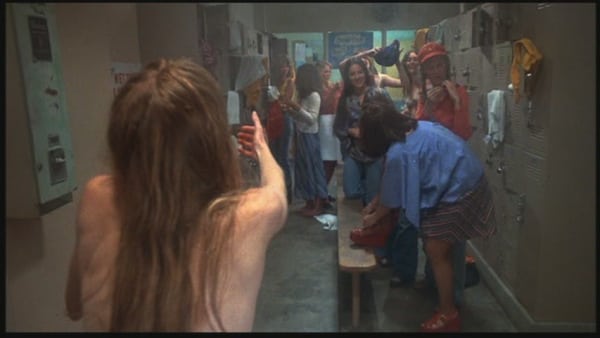
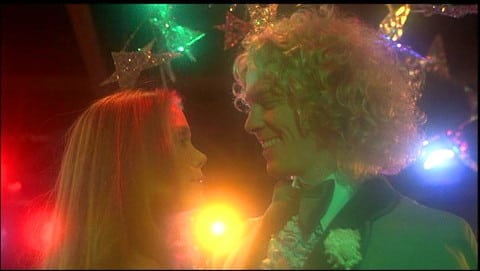




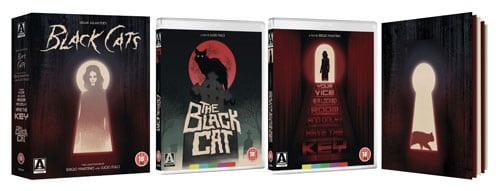
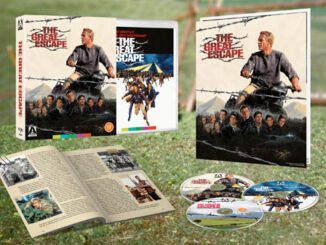
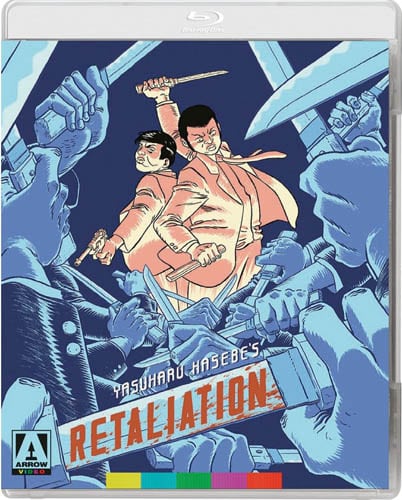
Be the first to comment